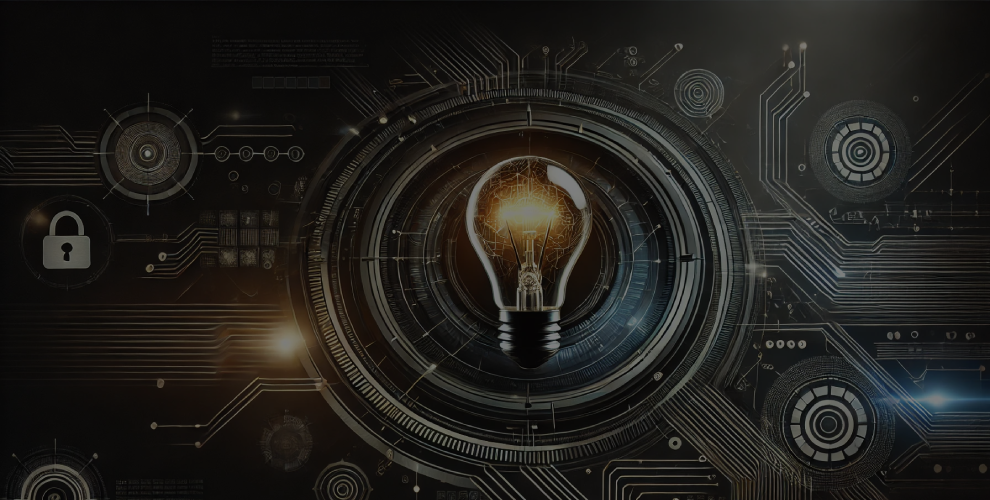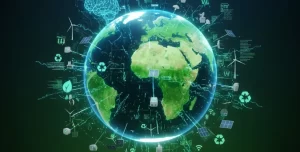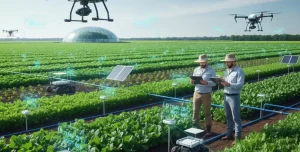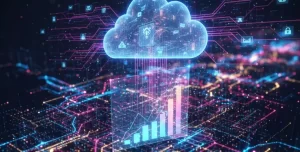
Harnessing Technological Innovation to Meet Sustainable Development Goals
Table of Contents
Introduction
Welcome to WikiGlitz! The Sustainable Development Goals (SDGs) set by the United Nations aim to address global challenges such as poverty, inequality, climate change, environmental degradation, and peace and justice.
Technological innovation plays a crucial role in achieving these goals. In this blog, we will explore how cutting-edge technologies are being utilized to meet SDGs, showcasing successful case studies and the impact of these innovations on global sustainability efforts.
Key Takeaways
- Technological advancements are essential for achieving SDGs, offering innovative solutions to complex global challenges.
- Integration of AI, IoT, blockchain, and other technologies enhances efficiency, transparency, and sustainability across various sectors.
- Real-world case studies demonstrate the positive impact of technology on sustainable development, providing models for future initiatives.
Understanding the Role of Technology in SDGs
Definition and Significance of SDGs
The Sustainable Development Goals (SDGs) are a set of 17 global objectives established by the United Nations in 2015 to address critical issues such as poverty, hunger, health, education, and climate change.
How Technology Aligns with the Goals
Technological innovation is vital in achieving SDGs as it provides tools and solutions to overcome various challenges.
From AI and machine learning to renewable energy and biotechnology, technology helps improve efficiency, reduce waste, and enhance the overall quality of life.
AI and Machine Learning
Optimizing Resource Use and Efficiency
AI and machine learning algorithms can analyze vast amounts of data to optimize resource use, reduce waste, and improve decision-making processes. These technologies are being applied in various sectors, including agriculture, energy, and healthcare.
AI in Precision Agriculture
Precision agriculture uses AI-driven tools to monitor crop health, soil quality, and weather conditions, enabling farmers to apply water, fertilizers, and pesticides more efficiently. This approach leads to higher yields, reduced resource use, and increased sustainability.
Renewable Energy Technologies
Advancements in Solar and Wind Energy
Technological innovations have significantly improved the efficiency and affordability of renewable energy sources like solar and wind power. These advancements are crucial for reducing reliance on fossil fuels and mitigating climate change.
Smart Grids and Energy Storage
Smart grids use AI and IoT technologies to manage electricity distribution, balancing supply and demand in real-time. Energy storage solutions, such as advanced batteries, store excess energy generated by renewable sources, ensuring a stable and reliable power supply.
Internet of Things (IoT)
Smart Cities and Infrastructure
IoT devices collect and transmit data to optimize urban infrastructure, from traffic management to energy use. Smart cities leverage IoT to improve efficiency, reduce pollution, and enhance the quality of life for residents.
IoT in Water Conservation
IoT sensors monitor water usage and quality, helping cities and agricultural operations conserve water. These sensors detect leaks, optimize irrigation schedules, and ensure safe drinking water, promoting sustainable water management.
Blockchain Technology
Enhancing Transparency and Accountability
Blockchain technology provides a secure and transparent way to track transactions and data, making it ideal for enhancing accountability in supply chains, financial systems, and governance.
Blockchain for Supply Chain Management
Blockchain is used to track products from their origin to the consumer, ensuring transparency and reducing fraud. This technology helps promote ethical sourcing, reduce waste, and ensure sustainable practices throughout the supply chain.
Biotechnology
Sustainable Agriculture and Food Security
Biotechnology offers solutions for sustainable agriculture through genetic engineering, biofertilizers, and biopesticides. These innovations help increase crop yields, reduce chemical use, and improve food security.
CRISPR and Genetic Engineering for Crop Improvement
CRISPR technology enables precise editing of plant genomes to enhance resistance to pests, diseases, and environmental stresses. This leads to more resilient crops, reduced need for chemical inputs, and increased agricultural sustainability.
Big Data and Analytics
Data-Driven Decision-Making for Sustainability
Big data analytics enables organizations to analyze large datasets for insights that drive sustainable practices. This includes monitoring environmental impact, optimizing resource use, and predicting future trends.
Big Data in Climate Change Mitigation
Big data analytics helps scientists and policymakers understand climate change patterns and predict future scenarios. This information is crucial for developing effective mitigation and adaptation strategies.
3D Printing and Advanced Manufacturing
Reducing Waste and Promoting Circular Economy
3D printing and advanced manufacturing techniques allow for precise production, reducing material waste and promoting recycling and reuse. These technologies support the development of a circular economy, where resources are continuously repurposed.
3D Printing in Construction
3D printing technology is being used to create sustainable building materials and construct energy-efficient homes. This reduces construction waste, lowers costs, and supports sustainable urban development.
Robotics and Automation
Increasing Efficiency and Reducing Human Impact
Robotics and automation technologies enhance efficiency in various industries, from manufacturing to waste management. These technologies reduce human error, increase productivity, and minimize environmental impact.
Robotics in Waste Management
Robots equipped with AI and machine learning are used to sort and recycle waste more efficiently. This improves recycling rates, reduces landfill use, and promotes sustainable waste management practices.
Green Building Technologies
Sustainable Architecture and Construction Practices
Green building technologies incorporate sustainable materials, energy-efficient designs, and smart systems to reduce the environmental impact of construction and operation.
LEED-Certified Buildings
LEED (Leadership in Energy and Environmental Design) certification recognizes buildings that meet high sustainability standards. LEED-certified buildings use less energy, water, and resources, contributing to a healthier environment.
Digital Education and E-Learning
Enhancing Access to Quality Education
Digital education platforms and e-learning tools make education more accessible and affordable. These technologies provide opportunities for lifelong learning and help bridge the educational gap in underserved communities.
Online Platforms for Lifelong Learning
Online learning platforms, such as Coursera and edX, offer courses on sustainable development, enabling individuals to gain knowledge and skills that contribute to achieving SDGs.
Impact of Technological Innovations on Global Sustainability
Evaluating the Overall Impact
Technological innovations have a profound impact on global sustainability by improving efficiency, reducing waste, and promoting responsible resource use. These advancements are crucial for achieving SDGs and creating a sustainable future.
Future Trends and Potential Advancements
As technology continues to evolve, we can expect further advancements in AI, IoT, renewable energy, and other fields. These innovations will drive sustainable practices and help address emerging global challenges.
Conclusion
WikiGlitz has brought you this comprehensive overview of how technological innovation is harnessing the power of cutting-edge technologies to meet Sustainable Development Goals.
By integrating these technologies into various sectors, we can enhance efficiency, promote sustainability, and create a more equitable world. Embrace these innovations to contribute to a sustainable future and address global challenges effectively.
FAQs
What are the Sustainable Development Goals (SDGs)?
The SDGs are a set of 17 global goals established by the United Nations to address critical issues such as poverty, hunger, health, education, and climate change by 2030.
How does technology help in achieving SDGs?
Technology provides innovative solutions that improve efficiency, reduce waste, and promote sustainable practices across various sectors.
Can you provide examples of successful technological innovations for sustainability?
Examples include AI in precision agriculture, blockchain for supply chain management, and IoT in water conservation.
What are the challenges in implementing these technologies globally?
Challenges include ensuring equitable access to technology, addressing ethical concerns, and managing the environmental impact of technological development.
How can individuals contribute to achieving SDGs through technology?
Individuals can contribute by adopting sustainable practices, supporting technological innovations, and engaging in lifelong learning about sustainability.
Want to keep up with our blog?
Our most valuable tips right inside your inbox, once per month.
Error: Contact form not found.
WikiGlitz Team
Welcome to WikiGlitz, your ultimate destination for tech insights and innovation. Our expert team is dedicated to delivering free resources and professional advice on various technology topics, including Artificial Intelligence, Cyber Security, Cloud Computing, and more. We strive to empower our readers with up-to-date information and practical guidance, ensuring you stay ahead in the rapidly evolving tech landscape. At WikiGlitz, we are passionate about making complex technology accessible to everyone. Our team of seasoned experts curates content that is both informative and engaging, helping you understand and leverage the latest tech trends. Whether you're a tech enthusiast or a professional, WikiGlitz is your go-to source for reliable, expert-driven content. Join us on this journey to explore and embrace the future of technology.





